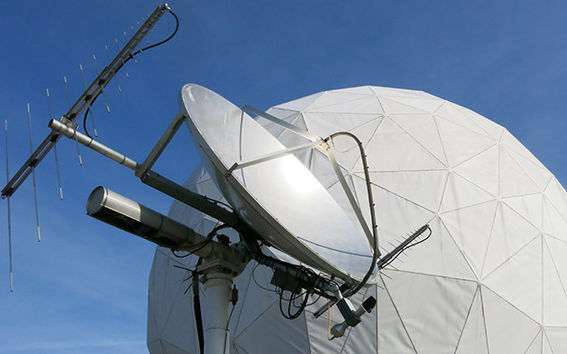Metsähovi collects key data for international use

Located in Kirkkonummi, the Metsähovi Radio Observatory is part of a consortium consisting of 13 countries and 28 leading radio observatories. The consortium received EUR 10 million in funding from the European Commission. The goal of the RadioNet consortium is to increase the level of intra-European co-operation and strengthen Europe's leading position in the field of radio astronomy.
The Metsähovi Radio Observatory constantly monitors space and galactic activity, i.e. quasars. Pride of place at the Observatory goes to its 14 m diameter radio telescope, the services of which are highly sought-after all around the world.
"In quasars, part of the material emitted from the black hole at the centre of the galaxy radiates in the form of corresponding emissions. These emissions constitute the most powerful form of radiation in the history of our universe. However, a comprehensive picture of these emissions is gained by taking readings at several different frequencies. Metsähovi observes objects at frequencies ranging between 2–150 gigahertz, and the findings made using Metsähovi's large radio telescope at 37 gigahertz are unique in all the world", says Metsähovi Director Joni Tammi.
"Metsähovi has been taking VLBI measurements for 25 years in co-operation with observatories all over the world. We are currently involved in a consortium which will further strengthen Metsähovi's already strong position among its European partners", adds Tammi.
Researchers interested in galactic details
The RadioNet consortium uses the radio telescopes and observations of consortium members to which all members have free access. The members pool their resources to, for example, develop new radio receivers and software for them, which are needed to process the massive data flows and ensure that this data is of the highest quality and without interference.
- By combining the data of all the radio observatories in Europe and elsewhere in the world, we can produce images whose resolution would otherwise require a telescope with a diameter of thousands of kilometres, explains Anton Zensus, professor at the Max Planck Institute for Radio Astronomy and head of the RadioNet consortium.
Astronomers are also studying details in the central areas of the Milky Way and other galaxies in order to obtain a picture of the space immediately surrounding the black hole found at the centre of our own galaxy using short wavelengths.
Further information:
Joni Tammi, Director of Metsähovi
telephone: +358 29 442 4858 (on working days 9–16)
metsahovi@aalto.fi
metsahovi.aalto.fi
Read more news

Seizing opportunities
Vuong Vo's path led through Aalto University and VTT to a startup, where he is helping build the protein factory of the future.Growing Materials, Growing Ideas: Inside the BioMaker Studio
At Aalto University’s BioMaker Studio, initiated by Ena Naito, students and researchers experiment with living materials, from algae to mycelium, creating an open, interdisciplinary space where design, biology, and collaboration grow together.
Your voice gives away valuable personal information, so how do you keep that data safe?
With speech technologies becoming increasingly common, researchers want to make sure we don’t give away more information than we mean to.






